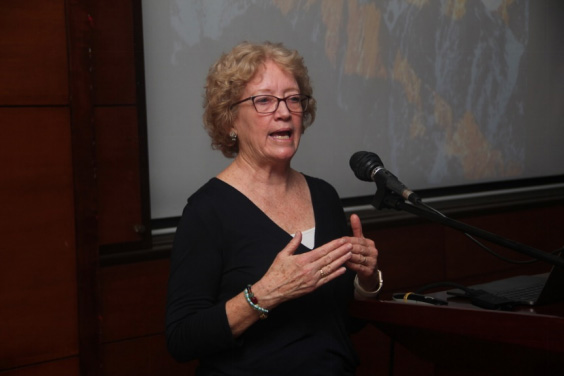CREDITS : M.I.T TECHNOLOGY REVIEW
These technologies all have staying power. They will affect the economy and our politics, improve medicine, or influence our culture. Some are unfolding now; others will take a decade or more to develop. But you should know about all of them right now.





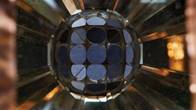

Biology’s next mega-project will find out what we’re really made of.
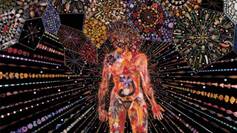

By experimenting, computers are figuring out how to do things that no programmer could teach them.

For details of these next generation technologies visit: https://www.technologyreview.com/lists/technologies/2017/
How a Student Photographed a Single Atom With a Store-Bought Camera
Look closely and you’ll see it: a pale, purple pixel hanging in a black field between two cylindrical needles.What looks like a shimmering speck of dust is actually something much, much smaller: a single atom of strontium, isolated in an ion-trap machine at the University of Oxford.
That’s small. Really small. Each atom is roughly 0.25 nanometers (or billionths of a meter) across; billions of the atoms would fit comfortably inside a single red blood cell.
How do you capture a photo of something this seemingly infinitesimally small? One photographer, David Nadlinger, used a standard digital camera — but he had some help setting up the shot courtesy of Oxford’s Ion Trap Quantum Computing lab, where he is researching for his Ph.D. On Feb. 12, Nadlinger won first place in a national science photography competition organized by the Engineering and Physical Sciences Research Council for capturing this rare photo of a single illuminated atom.
01:0501:05
“I think what makes this picture particularly interesting to people is that you can see the surrounding apparatus,” Nadlinger told Live Science. “And I think people are also surprised by how big the atom looks here. … I hope I’m not undoing 100 years of science education with this photo — atoms actually are unbelievably small!”
To be clear, Nadlinger said, the purple speck at the center of this photo is not the true size of the strontium atom itself; it’s the light from an array of surrounding lasers being re-emitted by the atom. When bathed in a specific wavelength of blue light, strontium creates a glow hundreds of times wider than the radius of the atom itself (which is about a quarter of a nanometer, or 2.5×10 to the -7 meters, Nadlinger said). This glow would be barely perceptible with the naked eye but becomes apparent with a little camera manipulation.
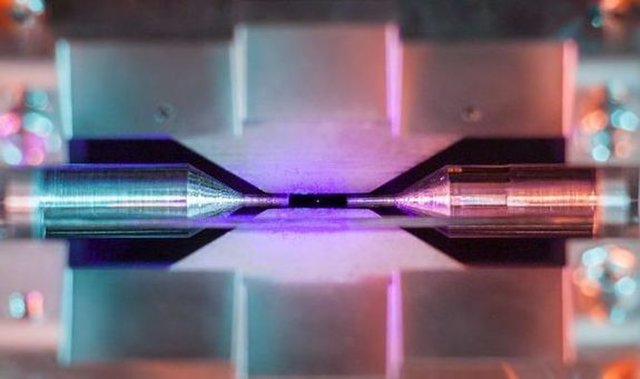
Look closely: that purple dot is the light shed from a single strontium atom.
Credit: David Nadlinger/ University of Oxford
“The apparent size you see in the picture is what we’d call optical aberration,” Nadlinger said. “The lens we’re seeing it through is not perfect — also it’s slightly out of focus and slightly overexposed. You could compare it to looking at the stars in the night sky, which appear bright but are actually much, much smaller than the size they seem to be, just because our eyes (or the camera) don’t have enough resolution to process them.”
So, seeing a single atom with the naked eye is impossible. Trapping one in a lab, however, is a little more doable.
To catch an ion by the toe
To make a single atom camera-ready like this, researchers first need to turn it into an ion: an atom with an unequal number of protons and electrons, giving it a positive or negative net charge. “We can only ever trap charged particles,” Nadlinger said. “So, we take a stream of neutral strontium atoms, which come from an oven, and shine lasers at them to selectively photo-ionize them. This way, we can create single ions.”
When placed in an ion-trap apparatus, single atoms are held in place by four blade-shaped electrodes like those seen above and below the strontium speck in Nadlinger’s photo (two additional electrodes are out of view). These electrodes create a current that keeps the atom fixed on the vertical axis; the two needle-shaped cylinders on either side of the atom keep it trapped horizontally.
As the currents from these electrodes interact, they create what is called a rotating saddle potential. “You can see videos online where people literally take a saddle and rotate it and put a ball on it; because of the rotation, the ball actually stays in the center of the saddle. So that’s what these electrodes do to confine the ion,” Nadlinger said.
Once an atom is confined, an array of lasers hits the atom, which scatters light in all directions; in Nadlinger’s photo, you can see traces of the blue laser throughout the background. Using this system, researchers can potentially trap strings of hundreds of ions between the little electrodes, resulting in some stunning imagery.
“On our website, we have a picture of nine ions trapped in a string,” Nadlinger said. “In terms of the science, that’s actually more interesting than having a single bright pixel surrounded by the ion trap. But to illustrate the concept, this might be more appealing.”
Nadlinger does not believe he is the first researcher to take such a photo, but he may well be the most successful at capturing the public’s attention with one.
“A group led by Hans Dehmelt, a pioneer of ion trapping and a Nobel laureate [in 1989], once took a picture of a single barium atom in their lab,” Nadlinger said. “It was a single bright speck on a dark background, apart from some laser scatter. There’s this story that they submitted this image to some conference proceedings — and the image editor just stamped out the ion because he thought it was a speck of dust.”
Originally published on Live Science.
Is This Seal the Earliest Evidence of the Prophet Isaiah?
By Owen Jarus, Live Science Contributor | February 22, 2018 12:01am ET
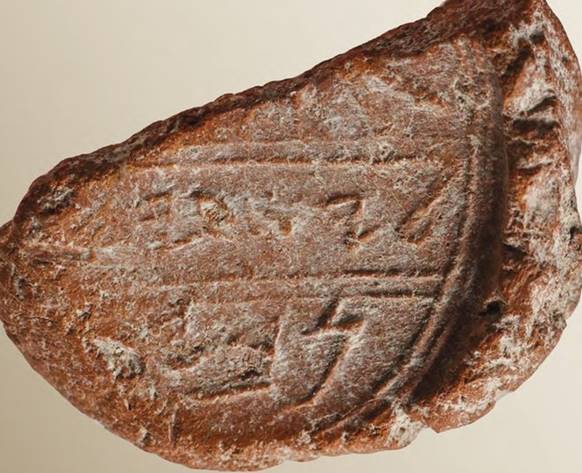
This 2,700-year-old seal impression contains the Hebrew name for “Isaiah” and may refer to the biblical prophet who lived at the same time.
Credit: Ouria Tadmor/copyright Eilat Mazar
Some 2,700 years ago, someone pressed a seal bearing the name Isaiah into a soft piece of clay, which hardened over time, say archaeologists who discovered the impression in Jerusalem.
If the seal was for the prophet Isaiah, it would be the first archaeological evidence of the Jewish prophet, who has a book in the Hebrew Bible named after him.
Isaiah, according to the Hebrew Bible, encouraged Hezekiah, king of Judah, to fight against the Assyrian army that laid siege to Jerusalem in 701 B.C. Isaiah advised Hezekiah to ignore Assyrian offers to surrender, and said that God would prevent Jerusalem from being captured. According to the Hebrew Bible, an “angel of the lord” destroyed the Assyrian army, while ancient Assyrian records claim that the army only left after Hezekiah agreed to pay a vast tribute. [The Holy Land: 7 Amazing Archaeological Finds]
Advertisement
Archaeologists discovered the seal impression during excavations in 2009 at the Ophel, an area in East Jerusalem located between the “City of David” archaeological site and the Temple Mount (a site also known as al-Ḥaram al-Šarīf). They found the impression of a King Hezekiah seal about 10 feet (3 meters) from the Isaiah seal impression, said the archaeologists, who are led by Eilat Mazar, an archaeology professor at the Hebrew University of Jerusalem’s Institute of Archaeology.
Though Isaiah’s name (which is “Yesha’yahu” in Hebrew) can be seen on the seal impression, archaeologists don’t know if it refers to the Biblical Prophet Isaiah or someone else with that name who lived 2,700 years ago.
“We appear to have discovered a seal impression, which may have belonged to the prophet Isaiah, in a scientific, archaeological excavation,” Mazar said in a statement.
If the seal impression can be identified with the Prophet Isaiah, it”would be the first archaeological and the earliest extra-biblical reference to the prophet Isaiah ever discovered,” said Robert Cargill, an archaeologist and professor of classics and religious studies at the University of Iowa, who is also editor of Biblical Archaeology Review, which will publish the study.
The name Isaiah means “YHWH saves” or “Yahu saves,” Cargill told Live Science, noting that there are other individuals in the Hebrew Bible who have it as part of their name.
Damaged inscription
Unfortunately, the seal impression is damaged — something that makes it difficult to determine whether the “Isaiah” in the impression is that of the prophet or it refers to someone else with the same name.
At the top of the seal impression, the lower part of a “grazing doe” can be seen, Mazar wrote in her article, noting that the doe is “a motif of blessing and protection found in Judah, particularly in Jerusalem.”
In addition to the name Isaiah, the word “nvy” can also be seen in the seal impression. Archaeologists are not certain what exactly this word means. Mazar noted that if nvy included the Hebrew letter “aleph” at the end, it would form a word that means prophet; however, examination of the damaged portion of the seal impression didn’t reveal any remains of the aleph, wrote Mazar.
Without an aleph, nvy could be a personal name, referring to a different Isaiah, rather than the title “prophet,” Mazar wrote.
Even without the aleph, it’s still possible that the word nvy could mean prophet, Mazar wrote. She noted that there are instances in the Hebrew Bible where the title “prophet” is spelled nvy — without the aleph.
The Ophel excavations are sponsored by Daniel Mintz and Meredith Berkman of New York. The discovery will be reported in a special double issue of Biblical Archaeology Review that is dedicated to the magazine’s founder, Hershel Shanks, who is retiring as editor.
An image of the Isaiah seal impression will be published in the special issue on Feb. 22 in Mazar’s article. The seal’s image will also be published in the future in volume two of the book “The Ophel Excavations.”
Originally published on Live Science.


